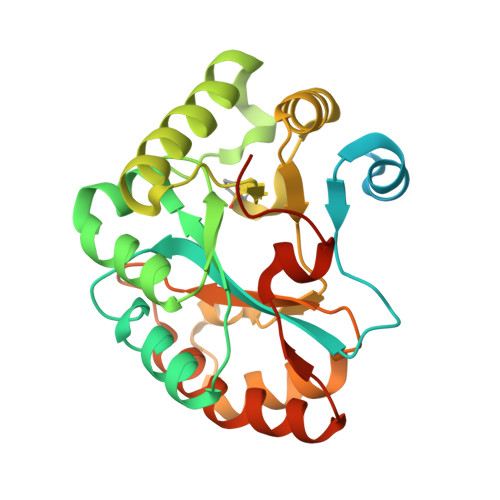Unusual alpha-Carbon Hydroxylation of Proline Promotes Active-Site Maturation.
Fadouloglou, V.E., Balomenou, S., Aivaliotis, M., Kotsifaki, D., Arnaouteli, S., Tomatsidou, A., Efstathiou, G., Kountourakis, N., Miliara, S., Griniezaki, M., Tsalafouta, A., Pergantis, S.A., Boneca, I.G., Glykos, N.M., Bouriotis, V., Kokkinidis, M.(2017) J Am Chem Soc 139: 5330-5337
- PubMed: 28333455
- DOI: https://doi.org/10.1021/jacs.6b12209
- Primary Citation of Related Structures:
4L1G - PubMed Abstract:
The full extent of proline (Pro) hydroxylation has yet to be established, as it is largely unexplored in bacteria. We describe here a so far unknown Pro hydroxylation activity which occurs in active sites of polysaccharide deacetylases (PDAs) from bacterial pathogens, modifying the protein backbone at the C α atom of a Pro residue to produce 2-hydroxyproline (2-Hyp). This process modifies with high specificity a conserved Pro, shares with the deacetylation reaction the same active site and one catalytic residue, and utilizes molecular oxygen as source for the hydroxyl group oxygen of 2-Hyp. By providing additional hydrogen-bonding capacity, the Pro→2-Hyp conversion alters the active site and enhances significantly deacetylase activity, probably by creating a more favorable environment for transition-state stabilization. Our results classify this process as an active-site "maturation", which is highly atypical in being a protein backbone-modifying activity, rather than a side-chain-modifying one.
Organizational Affiliation:
Institute of Molecular Biology and Biotechnology , 70013 Heraklion, Crete, Greece.

















